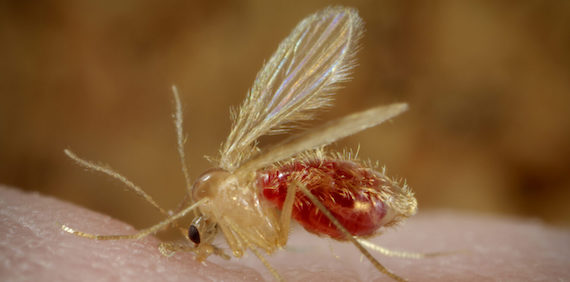
2006
Frank Collins
Leishmaniasis is transmitted by the bite of infected female phlebotomine sandflies, injecting the infective stage (i.e., promastigotes) from their proboscis during blood meals. Promastigotes that reach the puncture wound are phagocytized by macrophages ,and other types of mononuclear phagocytic cells, and inside these cells, transform into the tissue stage of the parasite (i.e., amastigotes), which multiply by simple division and proceed to infect other mononuclear phagocytic cells. Parasite, host, and other factors affect whether the infection becomes symptomatic and whether cutaneous or visceral leishmaniasis results. Sandflies become infected by ingesting infected cells during blood meals. In sandflies, amastigotes transform into promastigotes, develop in the gut, (in the hindgut for leishmanial organisms in the Viannia subgenus; in the midgut for organisms in the Leishmania subgenus), and migrate to the proboscis. See PHIL 3400 for a diagram of this cycle.
Climate change impacts on infectious diseases in the Eastern Mediterranean and the Middle East
A new study on the impact of climate change on infectious diseases in the Eastern Mediterranean and the Middle East, a region that is experiencing a significant warming trend with…
